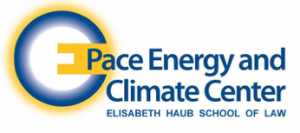Over the first six months of my employment at Pace Energy and Climate Center, one of my most challenging, but eventually rewarding, projects has been helping to design time-of-use (TOU) electric rate pilot programs in Maryland. Pace is funded by Earthjustice to represent a group of clients in the Maryland Public Service Commission (PSC) proceedings, with a focus on low and moderate-income (LMI) issues. As one of the only organizations pushing for LMI issues, fighting to keep space on the policy plate was a constant struggle at every meeting.
How do I engage?
At first, I was intimidated by engaging in the workgroup process. I was inexperienced, and the powerful organizations in the group, such as the utilities, had made their positions very clear. They fought any attempt to identify or make provisions for LMI customers as an extra, unneeded expense that would alter their analysis of system peak reduction. Any consideration was secondary to peak impacts, including customer welfare under the rate.
My interjections, while sometimes admittedly inappropriately timed over the phone, were dismissed as either unrealistic or pushing back on points that were foregone conclusions.
When you can’t win within, go over their heads
After weeks of workgroup meetings going nowhere, the first phase of the process came to a close. A non-consensus workgroup document was compiled, but importantly, this was an opportunity for participants to present written and oral comments before the PSC. The PSC would then rule on the specific issues that must be addressed by the pilot.
How different parties view the intent of the pilots has been key to making the right arguments to the right people to keep LMI issues a priority in the pilot design. Determining what the objectives of other, more powerful parties in the workgroup and in the PSC wanted allowed us to fight for best interests of those we represent.
- Most organizations in the group viewed TOU rates as a means for system benefits, with the burden of load shifting under penalty of higher rates born by the customer, and their vision of recruitment and evaluation of the pilot is shaped by that framing.
- At Pace, we viewed TOU rates as a way to help customers manage their bills first, with system peak reduction a combined benefit.
After much consultation with more senior staff and my supervisor, I submitted written comments, and traveled to Baltimore to present oral comments as well. Thanks to pages of notes with scientific citations addressing concerns of both peak reduction goals and customer bill reduction, I was able to address a lengthy round of questions in front of the PSC. By providing ways for LMI customers to become more responsive to the rate, such as provision of smart or programmable HVAC equipment, both goals could be met more effectively. LMI customers would shift more of their electric load, and this increased response would drive greater peak reduction. A win-win, and what the policy should be targeting.
When the PSC made their ruling, 4 of the 15 action items for the group were related to the comments I presented.
Make sure what you’ve won is what you want

On the particular issue of providing load-shifting technology, the different frames for what TOU rates should accomplish have effected their proposed implementation. After eventually forcing technology for LMI customers onto the policy plate through comments made to the Maryland PSC, the workgroup members concerned with peak reduction proposed a separate statistical treatment for LMI with and without technology to test its impact on peak reduction in response to the rate.
While this has its value, it does not match the intent of providing the best tools to customers. It would create one group that would not be allowed to use technology, and one that would be forced to. Instead of testing its impact, we want the greatest availability of enabling technology possible so that LMI customers are empowered to shift their load and lower their bill. While initially the idea of a separate treatment group for our policy proposal seemed like a great win, it actually undermined our concern for the benefit of all customers participating.
This constant assessment of priorities, both of other parties and of my own, has been key to successful policy advocacy and creation.


